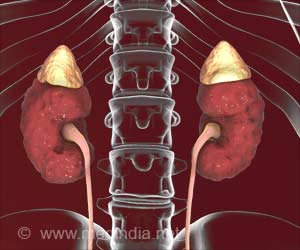In case of cystinosis, a rare and debilitating metabolic disease, artificial intelligence (AI) emerged as a promising ally for researchers.

Lysosomal cystine export regulates mTORC1 signaling to guide kidney epithelial cell fate specialization
Go to source). Insilico Medicine is a company that uses AI for drug discovery, to uncover the underlying cellular mechanism behind kidney disease in cystinosis.
Understanding Cystinosis
Cystinosis is a rare lyosomal storage disorder affecting around 1 in 100,000 to 200,000 newborns worldwide. Nephropathic (non-inflammatory) cystinosis, the most common and severe form of the disease, manifests with kidney disease symptoms during the first months of life, often leading to kidney failure before the age of 10. “Children with cystinosis suffer from a devastating, multisystemic disease, and there are currently no available curative treatments,” says Olivier Devuyst, head of the Mechanisms of Inherited Kidney Disorders (MIKADO) group and co-director of the ITINERARE University Research Priority Program at UZH.‘Recent developments in artificial intelligence and big data utilization have facilitated a deeper comprehension of cystinosis, a severe metabolic disorder. #metabolicdisorder #lyosomaldisorder’





The study findings revealed a causal association between the regulation of a protein called mTORC1 and the disease. Alessandro Luciani, one of the research group leaders, explains: “Our research showed that cystine storage stimulates the activation of the mTORC1 protein, leading to the impairment of kidney tubular cell differentiation and function.”
Promising Drug Identified for Cystinosis Treatment
As patients with cystinosis often require a kidney transplant to restore kidney function, there is an urgent need for more effective treatments. Utilizing the PandaOmics platform, the UZH research team therefore embarked on a search for existing drugs that could be repurposed for cystinosis. This involved an analysis of the drugs’ structure, target enzymes, potential side effects and efficacy in the affected tissues. The already-licensed drug rapamycin was identified as a promising candidate for treating cystinosis. Studies in cell systems and model organisms confirmed that treatment with rapamycin restored the activity of lysosomes and rescued the cellular functions.Olivier Devuyst and Alessandro Luciani are optimistic about future developments: “Although the therapeutic benefits of this approach will require further clinical investigations, we believe that these results, obtained through unique interdisciplinary collaboration, bring us closer to a feasible therapy for cystinosis patients.”
Reference:
- Lysosomal cystine export regulates mTORC1 signaling to guide kidney epithelial cell fate specialization - (https://www.nature.com/articles/s41467-023-39261-3)











